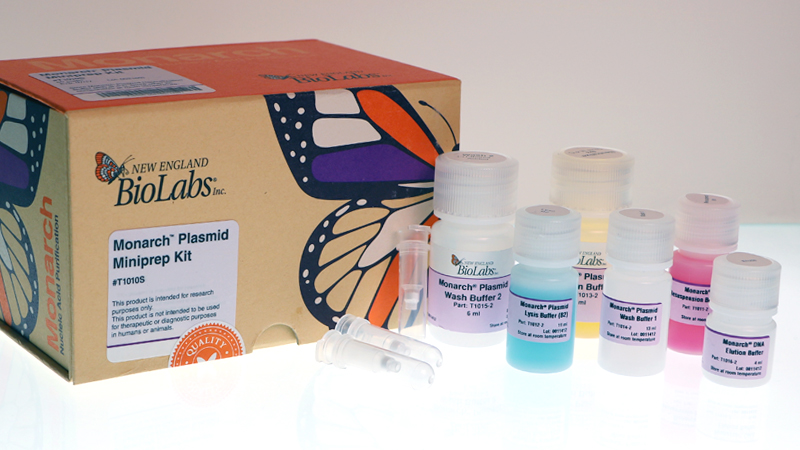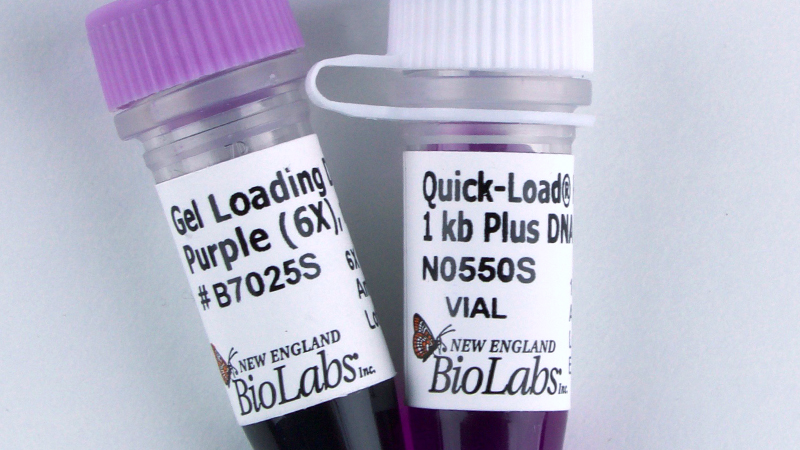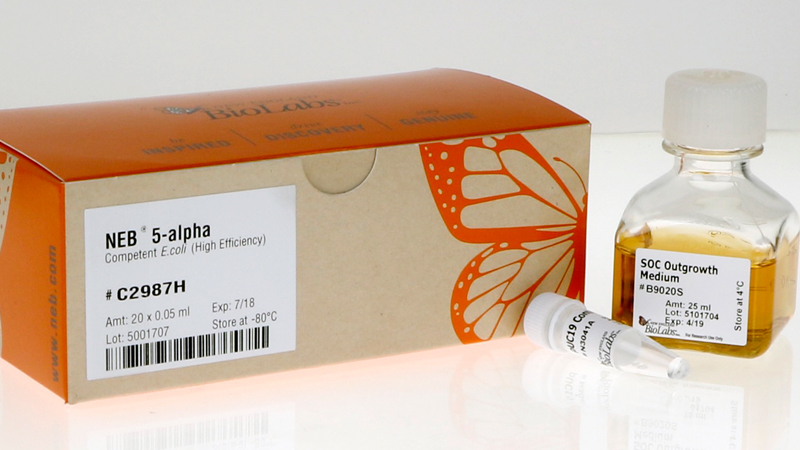NmeAIII
Product information| Code | Name | Size | Quantity | Price | |
|---|---|---|---|---|---|
R0711S |
NmeAIII, recombinant |
250 units ( 2000 units/ml ) | - | Unavailable in your region |
NmeAIII
SAM now included in enzyme formulation – no longer supplied as a separate vial.

Product Introduction
- 100% activity in rCutSmart™ Buffer (over 210 enzymes are available in the same buffer) allowing for easier double digests
-
Type IIS restriction enzymes recognize asymmetric DNA sequences and cleave outside of their recognition sequence
-
Requires two or more sites for cleavage. Please review the enzyme list and recommendations in the following table as well as the background information article.
-
Restriction Enzyme Cut Site: GCCGAG(21/19)
| Catalog # | Size | Concentration |
|---|---|---|
| R0711S | 250.0 units | 2000 units/ml |
Featured Videos
View Video Library-

Reduce Star Activity with High-Fidelity Restriction Enzymes
-
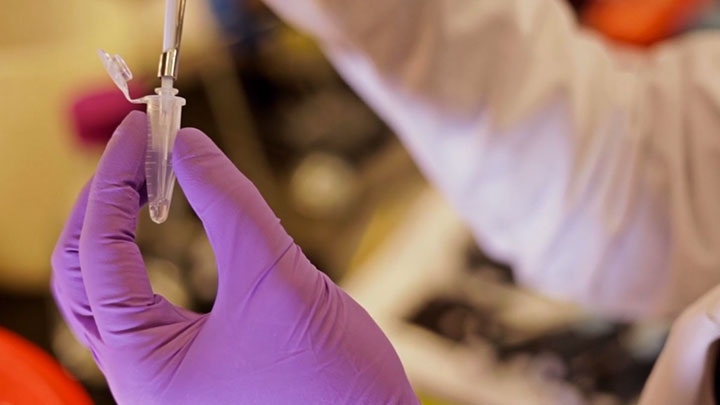
Standard Protocol for Restriction Enzyme Digests
-
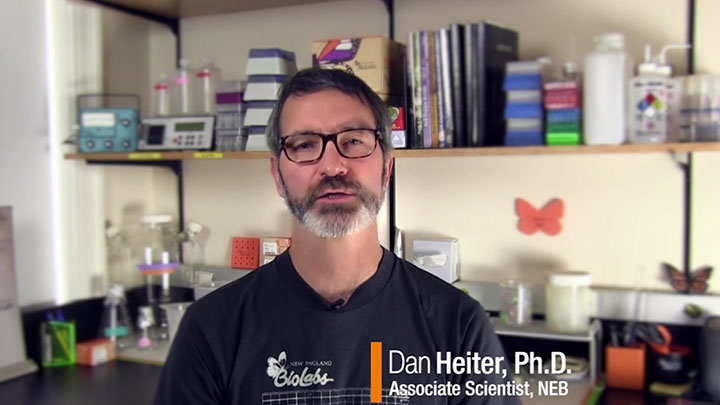
NEB® TV Ep. 15 – Applications of Restriction Enzymes
-

Restriction Enzyme Digest Protocol: Cutting Close to DNA End
-
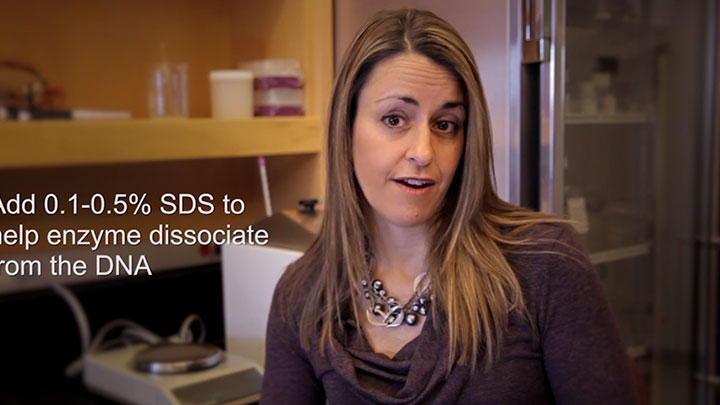
Restriction Enzyme Digestion Problem: DNA Smear on Agarose Gel
-
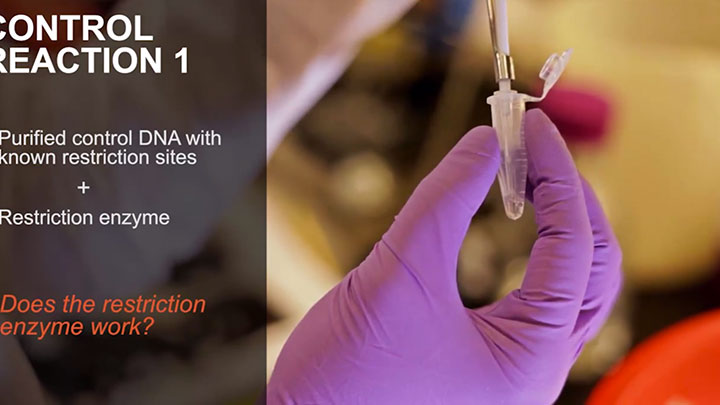
Why is My Restriction Enzyme Not Cutting DNA?
-

Restriction Enzyme Digest Problem: Too Many DNA Bands
-
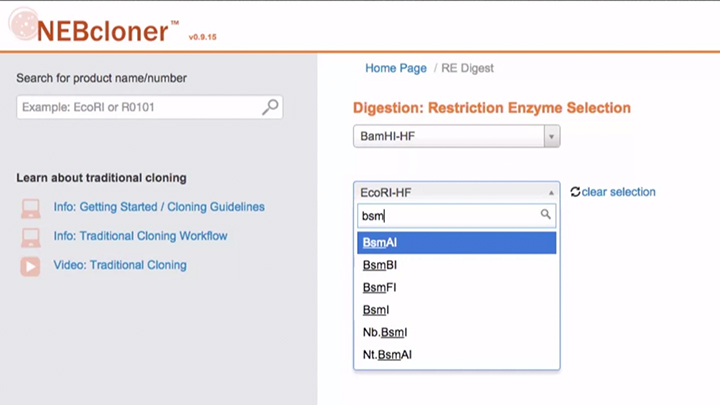
Double Digestion with NEBcloner
- Product Information
- Protocols, Manuals & Usage
- Tools & Resources
- FAQs & Troubleshooting
- Citations & Technical Literature
- Quality, Safety & Legal
- Other Products You May Be Interested In
Product Information
Description
Product Source
An E.coli strain that carries the cloned NmeAIII gene from Neisseria meningitidis- This product is related to the following categories:
- Restriction Endonucleases: N-O Products
- This product can be used in the following applications:
- Restriction Enzyme Digestion
Reagents Supplied
Reagents Supplied
The following reagents are supplied with this product:
| NEB # | Component Name | Component # | Stored at (°C) | Amount | Concentration | |||||||||||||||||||
|---|---|---|---|---|---|---|---|---|---|---|---|---|---|---|---|---|---|---|---|---|---|---|---|---|
| ||||||||||||||||||||||||
Properties & Usage
Unit Definition
One unit is defined as the amount of enzyme required to digest 1 µg of ΦX174 RF I DNA in 1 hour at 37°C in a total reaction volume of 50 µl.Reaction Conditions
1X rCutSmart™ Buffer
Incubate at 37°C
1X rCutSmart™ Buffer
50 mM Potassium Acetate
20 mM Tris-acetate
10 mM Magnesium Acetate
100 µg/ml Recombinant Albumin
(pH 7.9 @ 25°C)
Activity in NEBuffers
NEBuffer™ r1.1: 10%NEBuffer™ r2.1: 10%
NEBuffer™ r3.1: <10%
rCutSmart™ Buffer: 100%
Diluent Compatibility
Storage Buffer
10 mM Tris-HCl
300 mM NaCl
1 mM DTT
0.1 mM EDTA
0.32 mM S-adenosylmethionine (SAM)
500 µg/ml BSA
50% Glycerol
pH 7.4 @ 25°C
Heat Inactivation
65°C for 20 minutesMethylation Sensitivity
dam methylation: Not Sensitive
dcm methylation: Not Sensitive
CpG Methylation: Not Sensitive
Related Products
Companion Products
Materials Sold Separately
Product Notes
- Overdigestion with > 5 units of NmeAIII per µg of DNA is not recommended.
- NmeAIII requires S-adenosylmethionine (SAM) in reaction mixture for optimal activity (SAM is supplied in the enzyme formulation).
- NmeAIII requires two copies of its recognition sequence for cleavage to occur. Thus, the single NmeAIII site in pUC19 is resistant to cleavage. A 10-fold overdigestion cuts less than half of the DNA.
- The cleavage point may shift one base pair depending on the DNA sequence context between the recognition site and the position of cleavage. For a given sequence, generally one cut site will predominate.
- Significant cleavage occurs on ice and at 25°C.
- NmeAIII produces a stable partial digestion pattern even with excess enzyme. 1 unit is defined as the amount of enzyme required to produce this stable partial digestion pattern.
- Based on the stability of the enzyme in the reaction, incubations longer than 1 hr will not result in improved digestion, unless additional enzyme is added. Please refer to Restriction endonuclease survival in a reaction for more information regarding this topic.
- Requires two or more sites for cleavage. Please review the enzyme list and recommendations in the following table as well as the background information article.
- Not sensitive to CpG, dcm, or dam methylation.
Protocols, Manuals & Usage
Protocols
Usage & Guidelines
- Activity at 37°C for Restriction Enzymes with Alternate Incubation Temperatures
- Activity of Restriction Enzymes in PCR Buffers
- Cleavage Close to the End of DNA Fragments
- Digestion of Agarose-Embedded DNA: Info for Specific Enzymes
- Double Digests
- Heat Inactivation
- NEBuffer Activity/Performance Chart with Restriction Enzymes
- Optimizing Restriction Endonuclease Reactions
- Restriction Endonucleases - Survival in a Reaction
- Restriction Enzyme Diluent Buffer Compatibility
- Restriction Enzyme Tips
- Restriction enzymes requiring multi-sites for efficient cleavage
- Single Letter Codes
- Star Activity
- Traditional Cloning Quick Guide
Tools & Resources
Selection Charts
- Alphabetized List of Recognition Sequences
- Cleavage of Supercoiled DNA
- Compatible Cohesive Ends and Generation of New Restriction Sites
- Dam-Dcm and CpG Methylation
- Enzymes with Nonpalindromic Sequences
- Frequencies of Restriction Sites
- Isoelectric Points (pI) for Restriction Enzymes
- Isoschizomers
- NEB Diluent and Buffer Table
- Time-Saver™ Qualified Enzymes
- Type IIS Restriction Enzymes
- Why Choose Recombinant Enzymes?
Web Tools
FAQs & Troubleshooting
FAQs
- How can I search for a restriction enzyme by sequence, overhang or name?
- How should I stop my restriction digest?
- How stable is a particular restriction enzyme?
- When should I choose the HF version of an enzyme?
- When is star activity a concern?
- What does it mean to be Time-Saver™ qualified?
- How should I set up a restriction digest?
- I don't see any cleavage after my restriction digest. What factors can interfere with cleavage?
- How can I generate a restriction enzyme site map for my sequence?
- What information is available in the Restriction Enzyme Database (REBASE)?
- Is extended digestion (incubation times > 1 hour) recommended?
- Do degenerate recognition sites need to be palindromic?
- I tested your restriction enzyme on the substrate DNA recommended by NEB, and it appears to be active, however it does not digest my DNA. What could be the reason?
- Is this enzyme sensitive to dam, dcm or mammalian CpG methylation?
- Does NmeAIII require SAM for activity?
- Can you tell me more about the switch from BSA to Recombinant Albumin (rAlbumin) in NEBuffers?
Troubleshooting
Citations & Technical Literature
Citations
Additional Citations
Quality, Safety & Legal
Quality Assurance Statement
Quality Control tests are performed on each new lot of NEB product to meet the specifications designated for it. Specifications and individual lot data from the tests that are performed for this particular product can be found and downloaded on the Product Specification Sheet, Certificate of Analysis, data card or product manual. Further information regarding NEB product quality can be found here.Specifications
The Specification sheet is a document that includes the storage temperature, shelf life and the specifications designated for the product. The following file naming structure is used to name these document files: [Product Number]_[Size]_[Version]Certificate Of Analysis
The Certificate of Analysis (COA) is a signed document that includes the storage temperature, expiration date and quality controls for an individual lot. The following file naming structure is used to name these document files: [Product Number]_[Size]_[Version]_[Lot Number]- R0711S_L_v1_0021305
- R0711S_L_v1_0021308
- R0711S_L_v1_0031311
- R0711S_L_v1_0031405
- R0711S_L_v1_0031410
- R0711S_L_v1_0031509
- R0711S_L_v1_0031606
- R0711S_L_v2_0031606
- R0711S_L_v2_0031609
- R0711S_L_v2_0031707
- R0711S_L_v2_0031803
- R0711S_v2_10011902
- R0711S_v2_10025252
- R0711S_v2_10053313
- R0711S_v2_10081249
- R0711S_v2_10087109
- R0711S_v3_10091788
- R0711S_v3_10095460
- R0711S_v3_10132376
- R0711S_v3_10147373
- R0711S_v3_10161047
- R0711S_v3_10171809
- R0711S_v3_10215051
Safety DataSheets
The following is a list of Safety Data Sheet (SDS) that apply to this product to help you use it safely.NmeAIII
rCutSmart™ Buffer
Legal and Disclaimers
Products and content are covered by one or more patents, trademarks and/or copyrights owned or controlled by New England Biolabs, Inc (NEB). The use of trademark symbols does not necessarily indicate that the name is trademarked in the country where it is being read; it indicates where the content was originally developed. The use of this product may require the buyer to obtain additional third-party intellectual property rights for certain applications. For more information, please email [email protected].This product is intended for research purposes only. This product is not intended to be used for therapeutic or diagnostic purposes in humans or animals.
New England Biolabs (NEB) is committed to practicing ethical science – we believe it is our job as researchers to ask the important questions that when answered will help preserve our quality of life and the world that we live in. However, this research should always be done in safe and ethical manner. Learn more.
Other Products You May Be Interested In
The supporting documents available for this product can be downloaded below.








